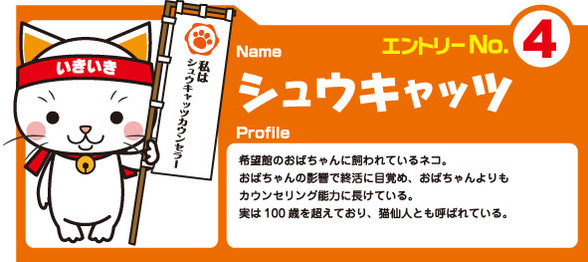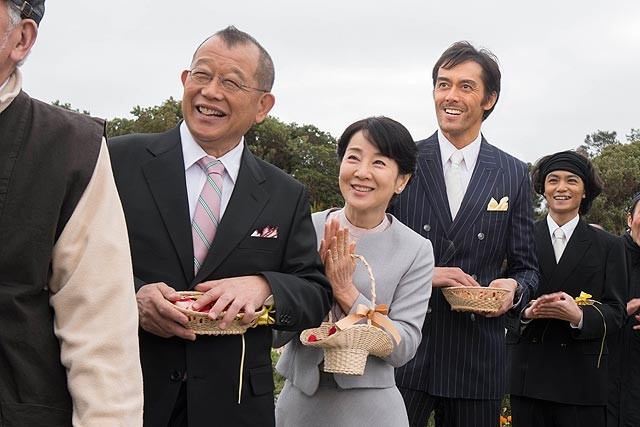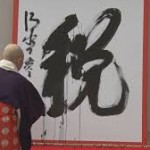WIT Life #295: Wonder 500 Exhibition
WIT Life is a periodic series written by professional Writer/Interpreter/Translator Stacy Smith (Kumamoto-ken CIR, 2000-03). She starts her day by watching Fujisankei’s newscast in Japanese, and here she shares some of the interesting tidbits and trends along with her own observations.
I arrived in DC yesterday to begin my first State Department interpreting assignment in a while. I’m looking forward to working with my Okinawan group as we travel across the country learning about base-hosting communities in the U.S. I hope that knowing our second half will be in San Diego/Hawaii will make surviving the brutal cold awaiting us in our next stop of Omaha, Nebraska a bit easier…
Getting to spend time in such lovely warm weather while New York is in the middle of winter is a great incentive to be on the road, but the hard part is missing out on cool stuff back home. One such event is the currently running Wonder 500, a collection of Japan’s finest goods, foods and travel experiences. This free exhibit Read More
WIT Life #294: 明けましておめでとうございます!
WIT Life is a periodic series written by professional Writer/Interpreter/Translator Stacy Smith (Kumamoto-ken CIR, 2000-03). She starts her day by watching Fujisankei’s newscast in Japanese, and here she shares some of the interesting tidbits and trends along with her own observations.
Happy New Year to all readers! Hope the year of the monkey has been treating you well so far. I am enjoying some time at home before my interpreting travel schedule begins at the end of this month. My first State Department trip of the year will start in DC and finish in Hawaii, so I am very much looking forward to that! After that I will be heading further east to Tokyo to work with a client over there, so many adventures on the road surely await…
Here are two Japan articles I recently read that I thought would be worth sharing. The first from the Wall Street Journal talks about the aging of the Japanese population (高齢化 or koureika) and how companies are targeting this older generation. The article highlights the business buzzword “end of life activities” (終活 or shuukatsu) being u sed to pitch products to the elderly.
sed to pitch products to the elderly.
There is even a costumed mascot known as Shu-Cat-su (シュウキャッツ), who has been attending trade fairs encouraging the elderly to purchase various services allowing them to better enjoy their golden years. Pictured here, his headband reads “Be Alive!” and his profile explains that he is actually over 100 years old and also known as cat wizard (猫仙人 or neko-sennin).
The second article is from the New York Times and takes a look at such Japanese mascots. It profiles Read More
WIT Life #293: 良いお年を!
WIT Life is a periodic series written by professional Writer/Interpreter/Translator Stacy Smith (Kumamoto-ken CIR, 2000-03). She starts her day by watching Fujisankei’s newscast in Japanese, and here she shares some of the interesting tidbits and trends along with her own observations.
In a follow-up to the comfort women story in my last post, NYT columnist Nicholas Kristof re-shared his 1995 story about Japanese comfort women who served US soldiers post-war. They were encouraged by the Japanese government to perform this patriotic duty in order to save Japanese women from being raped by marauding American soldiers. Initially they were primarily working prostitutes, but as time went on war widows and other women signed up as it was their only way to feed their families. Of course, these little known Japanese comfort women were different from the overseas ones who were mostly Korean teenagers dragged away from their homes and forced into front-line brothels to serve Japanese troops.
On a nice note to close out 2015, the recently aired Kennedy Center Honors honored composer Seiji Ozawa as one of the five recipients along with Carole King, Cicely Tyson, George Lucas and Rita Moreno. The Honors are presented to performing artists who have made a lifetime contribution to American art and culture, and Ozawa was the first Japanese recipient. Yoi otoshi wo and see you in the year of the monkey!
WIT Life #292: 今年の漢字
WIT Life is a periodic series written by professional Writer/Interpreter/Translator Stacy Smith (Kumamoto-ken CIR, 2000-03). She starts her day by watching Fujisankei’s newscast in Japanese, and here she shares some of the interesting tidbits and trends along with her own obse rvations.
rvations.
Well, it’s the end of the year already, and if you’re like me you’re wondering where 2015 went. The last time I checked in here was four months ago, which was pre-Paris attack and pre-Presidential candidate madness so a bit of a different world. We’ve certainly had our share of recent turbulence, and there is a big question mark as to what 2016 will bring. All of this uncertainty is part of why 安 (an or peaceful/cheap) was picked as 2015’s 今年の漢字 (kotoshi no kanji or kanji of the year) at Kyoto’s Kiyomizu Temple earlier this month.
It could refer to the 安 in 安全保障 (anzen hoshou or security), since the controversial 安全保障関連法 (anzen hoshou kanren hou or Security Related Bill) was approved back in September. It could also be reflecting the unstable environment in which we find ourselves experiencing information leaks and terrorist attacks, expressed by the word 不安 (fuan or anxiety/insecurity). 安’s selection could also be touching on Read More
WIT Life #291: Waku Waku +NYC event and Sebastian Masuda

Sebastian Masuda with protege Kyary Pamyu Pamyu
WIT Life is a periodic series written by professional Writer/Interpreter/Translator Stacy Smith (Kumamoto-ken CIR, 2000-03). She starts her day by watching Fujisankei’s newscast in Japanese, and here she shares some of the interesting tidbits and trends along with her own observations.
This weekend I had the chance to visit “Waku Waku +NYC,” a new Japanese pop culture festival which took place over two days across multiple venues in Greenpoint and Williamsburg. According to the event’s homepage, it brings together the worlds of anime, manga, music, food, film, and fashion via exhibits, panels, screenings, and interactive events. This blend of pop culture from Japan and Brooklyn was envisioned as “Cool Japan meets New York’s Coolest Borough.” The name Waku Waku (わくわく) Read More
WIT Life #290: Round Trip Heart/Our Little Sister
WIT Life is a periodic series written by professional Writer/Interpreter/Translator Stacy Smith (Kumamoto-ken CIR, 2000-03). She starts her day by watching Fujisankei’s newscast in Japanese, and here she shares some of the interesting tidbits and trends along with her own observations.
A business trip to Japan prevented me from viewing the majority of the films at this year’s Japan Cut s at Japan Society, but I was able to catch Round Trip Heart (ロマンス) during the festival’s opening week. Starring Yuko Oshima best known as a singer from the idol group AKB48, this film tells the story of an emotionally lost young woman whose job is to serve refreshments on board the train servicing the hot springs area of Hakone just outside Tokyo. It is through a chance encounter with a seemingly sleazy customer that enables her to examine her past and be able to look toward the future. This seemingly simple but touching movie made its North American premiere at Japan Cuts and was released in Japan the next week, so it was cool to be able to get a sneak peak ahead of the domestic market.
s at Japan Society, but I was able to catch Round Trip Heart (ロマンス) during the festival’s opening week. Starring Yuko Oshima best known as a singer from the idol group AKB48, this film tells the story of an emotionally lost young woman whose job is to serve refreshments on board the train servicing the hot springs area of Hakone just outside Tokyo. It is through a chance encounter with a seemingly sleazy customer that enables her to examine her past and be able to look toward the future. This seemingly simple but touching movie made its North American premiere at Japan Cuts and was released in Japan the next week, so it was cool to be able to get a sneak peak ahead of the domestic market.
Although I was sad to miss most of Japan Cuts, being in Tokyo allowed me to check out the newest work from my favorite Japanese director, Hirokazu Kore-eda, who I have written about numerous times here. It is called Our Little Sister (海街diary, literally Seaside Town Diary) and is based on the eponymous manga by Akimi Yoshida. It tells the story of Read More
to miss most of Japan Cuts, being in Tokyo allowed me to check out the newest work from my favorite Japanese director, Hirokazu Kore-eda, who I have written about numerous times here. It is called Our Little Sister (海街diary, literally Seaside Town Diary) and is based on the eponymous manga by Akimi Yoshida. It tells the story of Read More
WIT Life #289: NY Asian Film Festival
WIT Life is a periodic series written by professional Writer/Interpreter/Translator Stacy Smith (Kumamoto-ken CIR, 2000-03). She starts her day by watching Fujisankei’s newscast in Japanese, and here she shares some of the interesting tidbits and trends along with her own observations.
This year’s NY Asian Film Festival is showcasing 11 films as part of its focus on new cinema from Japan. I had the chance to catch two of them, Permanent Nobara (パーマネント野ばら) and Chasuke’s Journey (天の 茶助).
茶助).
The former flick stars the drama and film fixture Miho Kanno and the seemingly non-aging Yosuki Eguchi in a story set in a small fishing village in Shikoku (with dialogue in the regional dialect). Kanno’s character Naoko has returned to her hometown with her daughter, after divorcing her husband and leaving her life in Tokyo. Her mom runs the only town’s beauty salon, whose signature service is perms. The regulars gather there to snack and gab while getting their hair done, and this convivial and often raunchy atmosphere reminded me of the relationships between the women in Steel Magnolias.
Various aspects of Naoko’s life growing up in the village are revealed via flashback, including Read More
WIT Life #288: おわハラ and other Japanese harassment
WIT Life is a periodic series written by professional Writer/Interpreter/Translator Stacy Smith (Kumamoto-ken CIR, 2000-03). She starts her day by watching Fujisankei’s newscast in Japanese, and here she shares some of the interesting tidbits and trends along with her own observations.
I had the chance to go back to Japan on business this month and will be going again next month to interpret for the same project, so I’m excited to be able to visit on such a regular basis. Being back in a Japanese workplace reminds me of the different styles our two cultures have when it comes to this environment, whether it is the uniforms worn by OLs or the wide open floor plan consisting of endless islands where people sit. Another striking aspect is the specific categorization of various types of potential harassment in the workplace. I’m sure most people have heard of セクハラ (sekuhara which is short for “sexual harassment”) and maybe パワハラ (pawahara which is short for “power harassment,” when a superior uses his/her power to influence a subordinate), but lately there are some new versions of harassment in Japan to take note of.
take note of.
For example, マタハラ (matahara or “maternity harassment”) describes when a pregnant woman is bullied because of her physical state, and usually the perpetrator’s motivation is trying to get her to quit. A newer term which was just coined this past March is おわハラ (owahara, coming from 就活終われハラスメント or “job search termination harassment”). It refers to when potential employers pressure their university student recruits to stop considering offers from other companies by offering them a guaranteed position in their own.
This article, though a bit dated, offers a humorous take on the “hara” phenomenon. I like his suggestion of adding “hara hara” at the end!
One other Japanese suffix that might rival “hara” in usage is “活”, or “katsu” which is used to refer to Read More
WIT Life #287: 猫マニア!
WIT Life is a periodic series written by professional Writer/Interpreter/Translator Stacy Smith (Kumamoto-ken CIR, 2000-03). She starts her day by watching Fujisankei’s newscast in Japanese, and here she shares some of the interesting tidbits and trends along with her own observations.
Can’t believe it’s been almost a month since I’ve written here, but two weeks of that time was my amazing trip to Japan! I wasn’t sure how spending Golden Week in Tokyo would be, but it was actually quite nice as people tend to leave town to travel both domestically and abroad. Most of my friends stuck around, so it was great to catch up with them without the usual work and other obligations cutting into our time together. Thanks to them, I was able to explore some new neighborhoods and local parks I had never been to and to just enjoy taking it easy in Tokyo, a rarity when things are in no rmal operation.
rmal operation.
During my second week I began to miss my cats at home, so I decided to go to a cat cafe. For some reason I have never thought to visit one during my previous visits to Japan, but part of why I wanted to go this time is that we now have our very own cat cafe in NY so I wanted to check out the original version. I picked one in Kichijouji as it was close to the station, but when my friend and I went upstairs we were told the wait would be a few hours. We had plans later in the day, so I made a reservation for another day that week.
I returned to the cafe at the appointed time and was given a lanyard upon which my start time and other information was marked, and was asked to wash and disinfect my hands. It cost Read More
WIT Life #286: 和食
WIT Life is a periodic series written by professional Writer/Interpreter/Translator Stacy Smith (Kumamoto-ken CIR, 2000-03). She starts her day by watching Fujisankei’s newscast in Japanese, and here she shares some of the interesting tidbits and trends along with her own observations.
This weekend I had the chance to check out the documentary Washoku at Cinema Village, where it will be playing through the end of the month. It features interviews with sushi chefs and other Japanese food proprietors, and asks them about their philosophy, preparation and overall view of Japanese food. Many of them in talk in detail about the sacrifices they make for their craft, and how much pride they have in their work. This film is truly a must see for all washoku lovers.
One of the tidbits I found interesting was the discussion of “umami,” or the fifth taste. In one part, they were talking about the “aku” or scum that appears on the top of soup when it is being cooked, and how in Japan Read More
WIT Life #285: Japanese Stars in Recent American Cinema
WIT Life is a periodic series written by professional Writer/Interpreter/Translator Stacy Smith (Kumamoto-ken CIR, 2000-03). She starts her day by watching Fujisankei’s newscast in Japanese, and here she shares some of the interesting tidbits and trends along with her own observations.
Lately there have been a bonanza of films being screened here in the city made by American directors starring Japanese actors.
One is Kumiko the Treasure Hunter, currently playing at IFC, Nitehawk Cinema and BAM. It features the ever fabulous Rinko Kikuchi as a discontent OL who is dealing with a harassing boss, insipid colleagues and a mother who is nagging her to get married. She is totally disconnected from the world around her, with her only salvation being her pet bunny and her worn out VHS tape of the movie Fargo.
She watches the scene where Steve Buschemi’s character buries the money over and over while taking meticulous notes, and is convinced that the treasure is still there and she is the Spanish conquistador who must find it. Kumiko eventually makes it to the Midwest, but linguistic and other challenges Read More
WIT Life #284: Durham’s Dashi Ramen & Izakaya
WIT Life is a periodic series written by professional Writer/Interpreter/Translator Stacy Smith (Kumamoto-ken CIR, 2000-03). She starts her day by watching Fujisankei’s newscast in Japanese, and here she shares some of the interesting tidbits and trends along with her own observations.
I was in Raleigh, NC this past weekend for an interpreting conference (hosted by the fabulous Carolina Association of Translators & Interpreters), and I wanted to check out the new Japanese influences as it had been a while since I had visited the area. After going to see a band in downtown Durham, I was looking for a place to grab a drink. I hoped to come across somewhere promising close to the venue, so was thrilled when I saw a sign for Dashi Ramen Shop & Izakay a.
a.
Unfortunately the downstairs ramen shop had closed at 10:30 (on Saturday night?!), but the upstairs izakaya was still open with a limited menu. I was happy to find a wide selection of Hitachino beers, including an Espresso Stout I had never tried before. Of course I needed some Read More
WIT Life #283: Cape Nostalgia
WIT Life is a periodic series written by professional Writer/Interpreter/Translator Stacy Smith (Kumamoto-ken CIR, 2000-03). She starts her day by watching Fujisankei’s newscast in Japanese, and here she shares some of the interesting tidbits and trends along with her own observations.
I’ve been on the road for the majority of this month, and have been glad to escape the cold weather. Now that March is around the corner, hopefully temps will warm up and we can look forward to spring and sakura season! I was lucky enough to finish my business trip in Honolulu, which as usual was flooded with Japanese tourists, and took a vacation afterwards in Kauai, which was peacefully free from them. Before that my interpreting took me to Washington, Minneapolis and Portland, and I found plenty of fun Japanese influences along the way.
During my flight home from Hawaii I watched the film ふしぎな岬の物語 (Fushigi na misaki no monogatari) or Cape Nostalgia, which I have wanted to see since it came out at the end of last year in Japan and got rave reviews. It is based on a book by Akio Morisawa, and tells the story of a café situated along a small cape in Chiba that is run by an elderly woman named Etsuko Read More
WIT Life #282: あけおめことよろ!
WIT Life is a periodic series written by professional Writer/Interpreter/Translator Stacy Smith (Kumamoto-ken CIR, 2000-03). She starts her day by watching Fujisankei’s newscast in Japanese, and here she shares some of the interesting tidbits and trends along with her own observations.
Happy New Year! The greeting in the title is an abbreviation of 「明けましておめでとうございます!今年もよろしくお願いします。」 (“Akemashite omedetou gozaimasu! Kotoshi mo yoroshiku onegai shimasu.”). We all know how much the Japanese love their abbreviations! I hope everyone had a fun and relaxing 年末年始 (nenmatsu nenshi, or year-end and new year), and are ready and refreshed for 2015. We are now in the year of the sheep, so for all of you with this animal sign this is your year.
The Abe administration is also hoping it is the year for women, coming off of his disastrous efforts in this arena last year with the resigning of two female ministers and general skepticism in regard to his Womenomics agenda. There was an interesting Read More
WIT Life #281: 今年の漢字
WIT Life is a periodic series written by professional Writer/Interpreter/Translator Stacy Smith (Kumamoto-ken CIR, 2000-03). She starts her day by watching Fujisankei’s newscast in Japanese, and here she shares some of the interesting tidbits and trends along with her own observations.
In a follow-up to yesterday’s post about the top 10 buzzwords in Japan this year, the country’s “kanji of the year” was just announced. 税 (zei) or tax was selected, referring to the consumption tax increase from 5% to 8% in April. The last time the tax had gone up was in 1997 when it went from 3% to 5%. Prime Minister Abe had to decide by the end of the year whether it would be further increased to 10% next year as planned, but he decided to delay this course of action to a later point in time. The selection of 税, along with the other top candidates, indicates a mood of anxiety and uncertainty in Japan.
Coming in at #2 was 熱 (netsu), meaning heat, fever or passion. This points to Read More

